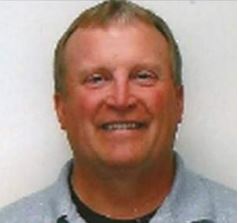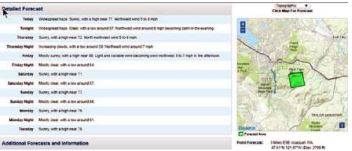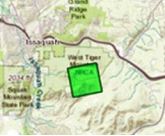Forecasting Transmitter Site Weather

[December 2018] A fair amount of what broadcasters do is determined by the weather. Especially on mountain sites, weather may either allow or prohibit access to the site. Having a private forecast for your site can be very handy.
What is the weather forecast at my transmitter site? Have you ever asked that question, particularly if the weather is “iffy?’
What source do you use to address that question? Your smart phone weather app? A website? Your weather radio?
Custom Forecast For You
Consider using the site-specific National Weather Service (NWS) digital weather forecast to answer the question.
Your local NWS forecast office website offers this “local” weather forecast information. You can also find it on your smart phone by going to mobile.weather.gov, a mobile phone website application that you can bookmark.
By using your local NWS forecast office digital weather forecast information, you will get forecast information from experienced and local forecasters who live and work in your area.
Other sources such as your phone weather app or other websites come from other parts of the country or, in one, phone app case – Russia! Many of these resources use purely automated computer forecast output with no human input at all. This fact helps explain why those weather forecasts seem to be “off” at times.
Know Before You Go!
Some of you service mountain-top transmitter sites where the weather can differ greatly from lower elevations.
Let us use this example: West Tiger Mountain, about 20 miles East of Seattle. The site has an elevation of a little over 2500 feet with a great view of Mount Rainier to the South. So the weather at that higher elevation location is much different than in the lowlands near Puget Sound.
Knowing what weather to expect before ever heading to your targeted transmitter site is very important. For example during the winter season in the West Tiger Mountain situation, it can be raining in the Puget Sound area while snowing up at West Tiger.
Getting the Forecast
Here is the simple process to get a pin-point forecast for your site.:
Start by visiting www.weather.gov to view the whole nation and then click on your neck of the woods – that click will get you to your local forecast office – and bookmark that. Then using the front page provided clickable forecast map, click on the spot for your transmitter site.
The next page to appear will provide a map with a green box on it. You can zoom in and click one more time if you need to “fine-tune” the location. Now you have the forecast for your transmitter site. Scroll down and you can get the hourly forecast for that location as well. You will want to bookmark both of these pages
Local Information
Has this information now sparked your interest? There are 122 NWS forecast offices across the country with at least one serving your area.
Perhaps you service different parts of the nation or your local service area is broad, you can use this process for all of your transmitter sites as well as any other desired locations for business or pleasure and save them in a folder or spread-sheet.
Let us take a closer look at this process by again using West Tiger Mountain in Western Washington as the example.
Tiger Mountain Example
By visiting www.weather.gov/seattle/ , the West Tiger site-specific 7-day weather forecast looks like this. On this particular date, wildfire smoke was widespread throughout much of the region

On the left is the forecast, on the right is the area of concern.

Note the green box – that is how specific the forecast can be.
But as they say in some television commercials, “there’s more!” Scroll down a bit and you will get the hourly forecast for that same green box (about one nautical mile square) location.

Yes, that is a hourly forecast for temperatures, wind direction and speed, cloud cover, rain or snow amounts and more!
Confidence
By knowing this information before you ever step into your vehicle, you know what to expect at the transmitter site prior to hitting the road.
If the weather at your site is going to be inclement, you will be prepared for it, or if the weather is just plain lousy, you can postpone that routine maintenance until the weather there improves.
I hope you have found this information quite helpful. As they do say, when you are “weather aware,” you are “weather prepared.”
If you have other weather-related questions that you would like addressed, let Clay Freinwald know at k7cr@blarg.net and he will share them with me.
– – –
Ted Buehner served the National Weather Service for 40 years, including being the warning coordination meteorologist and Vice-Chair of the Washington SECC, retired earlier this year.
